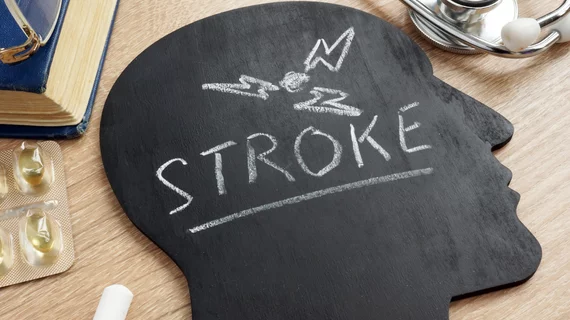AI-powered stroke triage software meaningfully reduces treatment times, randomized trial finds
An artificial intelligence-powered stroke software system can help to meaningfully reduce treatment times, according to the results of a randomized trial published in JAMA Neurology.
As the saying goes “time is brain,” with prompt endovascular thrombectomy dramatically improving outcomes for large vessel occlusion acute ischemic stroke patients, when delivered promptly. Scientists recently tested the utility of AI in this process, conducting a study involving 243 individuals treated over a one-year period.
For the analysis, automated LVO detection from CT angiograms was paired with secure messaging across four comprehensive stroke centers in a random-stepped fashion. This allowed radiologists and other clinicians to receive real-time alerts via their smartphones to notify them of a possible LVO within minutes after the completion of a CT exam.
The intervention produced promising results. “Door to groin” time required for a patient to reach the neuro-interventional radiology suite for treatment fell by 11.2 minutes, while the span from CT scan initiation to thrombectomy fell by 9.8 minutes.
Experts offered multiple possible reasons for the improvements seen in the study.
“The automated LVO alert arrives within minutes of CTA completion, far earlier than human interpretation, and in many cases even before the CTA images were available for review on the clinical PACS,” corresponding author Sunil A. Sheth, MD, with the Department of Neurology at McGovern Medical School at UTHealth in Houston, and colleagues noted. “Additionally, with implementation of this software, LVO alerts were now widely available and on an easily accessible, real-time record,” the authors added later. “It is possible that the knowledge that they could be observed changed care teams’ behavior.”
The study was conducted between early 2021 and 2022 in the Houston area, with 140 patients treated using standard triage and 103 more under the new AI-based approach. Median National Institutes of Health Stroke Scale score at presentation was 17, while the median door-to-groin time was 100 minutes prior to the intervention.
Sheth et al. observed no differences in IV tissue plasminogen activator treatment times nor hospital length of stay between the two study cohorts. After adjusting for age and other factors, there also was no difference in the likelihood of functional independence.
“In a cohort as heterogeneous as this one, in which nearly all patients with EVT presenting through the emergency department were included, it is unlikely that our sample size would provide sufficient power to detect a difference in clinical outcomes with an 11-minute acceleration in care,” the authors noted. “We did observe a reduced rates of mortality although the explanation is not immediately clear.”
Read much more about their results in JAMA at the link below.

